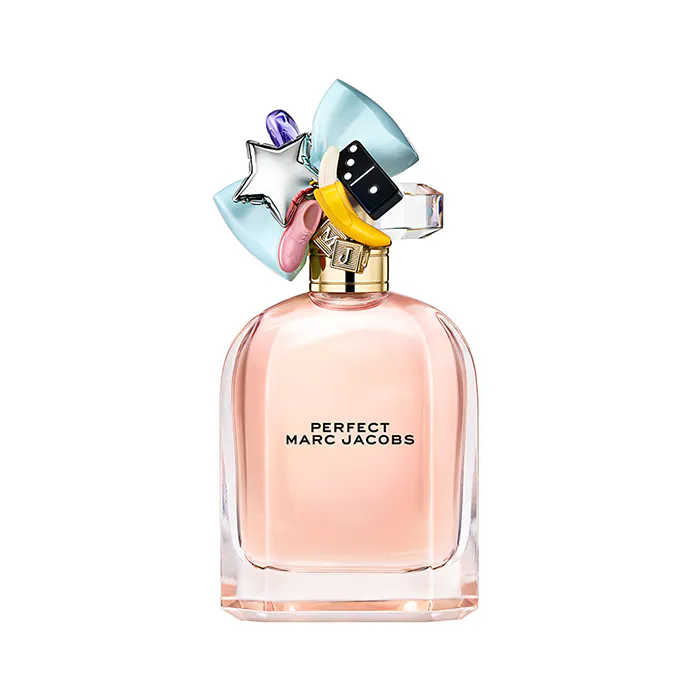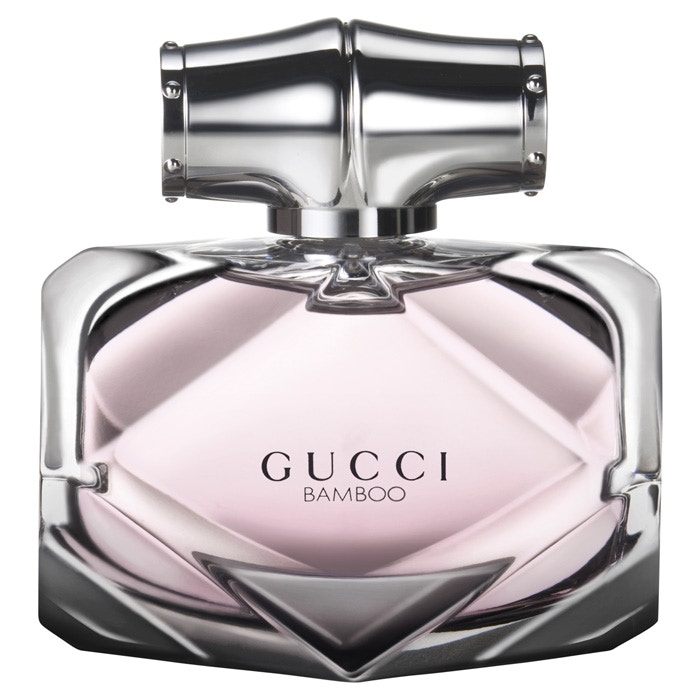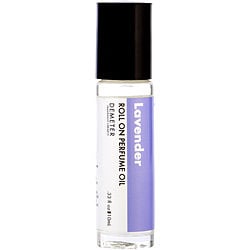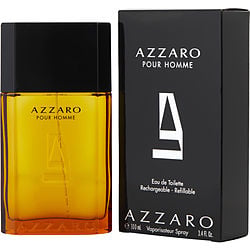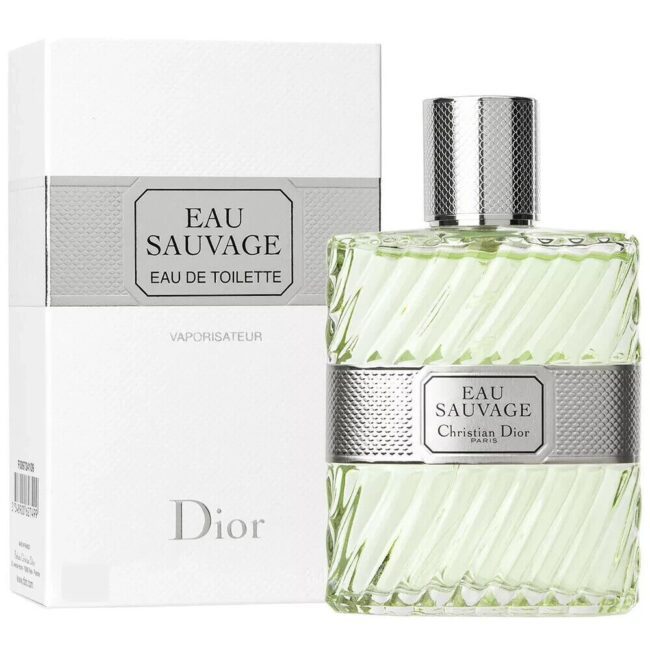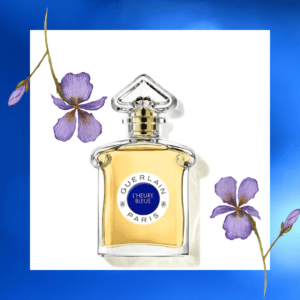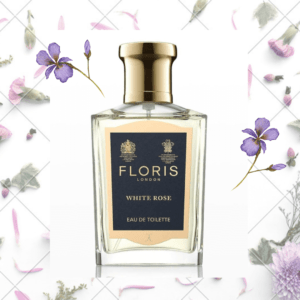History
-
An Olfactory Experience
Our journey with scents kicks off in the cradle of civilisation. Ancient cultures, like the Egyptians and Mesopotamians, were pioneers in using fragrances, relying on the power of scent for rituals, medicine, and even love. Think incense wafting through temples or scented oils adorning royalty. These folks knew their way around a good smell!
A Journey Through Fragrance History
For as long as I can remember, I’ve been captivated by the story of fragrances—their origins, evolution, and the reasons why people have cherished perfumes and aftershaves for centuries. This fascination led me to explore how different cultures and eras have infused meaning into scent, using it for everything from ritual and protection to status and personal expression.
This journey into the olfactory world is like discovering a hidden language that speaks to our most profound memories and emotions, and I’m excited to share it with you here.

For me, wearing perfume isn’t just reserved for special occasions—it’s a part of my everyday ritual, whether heading out or staying in. There’s something about a favourite scent that instantly lifts my mood and adds a little extra enjoyment to the day.
I think that’s why so many of us, both men and women, are drawn to fragrance. It’s not just about smelling nice; it’s a small act of self-care that makes us feel good, grounded, and even a bit more like ourselves.
Related Article: Chanel No. 5 Perfume History
From Trade Routes to Cultural Staples: The Evolution of Fragrance Through History
Fast-forward a few thousand years, and the world of fragrance saw transformations with the Silk Road. Trade routes became scent highways, with spices and perfumes as coveted as gold.
These exchanges expanded the palette and reach of various scents, turning them into status symbols and cultural staples. Middle Eastern, Indian, and Chinese influences started seeping into European lands, ushering in a new era of olfactory adventures.
It wasn’t just about smelling nice. The scent was believed to have protective qualities against diseases back when hygiene was, let’s say, not as advanced as it is today. The ‘Great Stink’ of old cities led to the creation of colognes and perfumes as essential rather than luxury items. Talk about necessity driving innovation!
The Renaissance period blew the lid off fragrance innovation, almost like a rebirth of perfume artistry. Perfumes transitioned from medicinal to luxury, with France taking centre stage. The art and science of making perfumes became more refined, setting standards still revered today. France isn’t just known for its wine!
Diving into the origins of our olfactory experiences provides a foundation for understanding how deeply rooted and historically significant scents are in our world. It’s fascinating to see how simple rituals evolved into a complex industry that captivates our senses.
Affiliate DisclosureThis post contains affiliate links, which means I may earn a small commission if you click on a link and make a purchase at no additional cost. I only recommend products or services I believe in; all opinions are mine. Thank you for supporting this website..The Science Behind Scent: Understanding Our Unique Olfactory System
Our sense of smell might seem straightforward, but a sophisticated process happens in our noses. Your olfactory system kicks into gear when you catch a whiff of fresh coffee or your favourite perfume. Each scent carries molecules that travel up to your nasal cavity, where olfactory receptors interpret these tiny signals. What happens next is like magic—the brain decodes these signals, giving us a unique perception of scent.
Have you ever wondered why the smell of rain might thrill one person but leave another indifferent? That’s because our scent preferences are as unique as our fingerprints. Genes are crucial in making our olfactory receptors genetically diverse, meaning each person might smell the same thing differently. Mind-blowing, right?
And there’s more at play than just genetics. Our environment and experiences dictate a lot about our scent preferences. Imagine the comforting aroma of your grandmother’s apple pie or the nostalgic smell of your childhood favourite candy. These experiences become engraved in our olfactory memory, giving particular scents a personalised twist.
Let’s not overlook other intriguing factors like memory and emotion. The part of the brain that processes scents is linked to areas that handle emotions and memories. That’s why fragrances can transport us back to a specific moment or make us feel a certain way—almost like time travel for the senses.
Related Article: Psychology Of Perfume
So, when you’re sniffing the air with delight or wrinkling your nose at an unpleasant smell, know this: your olfactory system and life experiences are putting on one complex, nuanced show. Embrace this unique aspect of being human, and maybe consider how you can use scent to enhance your daily life.
Personal and Cultural Preferences in Fragrances
When picking a scent, it’s not just your nose making the call. Personal experiences shape what pleasant and not-so-pleasant smells are to each of us. For instance, if you grew up baking cookies every Sunday, a whiff of vanilla or chocolate might be more comforting for you than for someone else.

Beyond personal moments, culture has a massive say in what scents we lean towards. Different regions elevate aromas based on local flora, cuisine, and traditions. Imagine the tangy, spicy notes in South Asian countries or the fresh, citrusy vibes often associated with the Mediterranean. Regional smells reflect the lifestyle and local history, adding layers to scent preferences.
The fragrance a person wears or loves also tells a story about where they come from and what resonates with them emotionally and culturally. It’s why perfumes can vary so much from one place to another, with no scent reigning supreme globally.
All these factors blend to give scents their psychological and emotional clout. Think about how some scents can uplift your mood, help you relax, or even boost your confidence. Psychological studies suggest that certain scents can trigger positive feelings—like lavender for relaxation or citrus for invigoration.
Related Article: The Fragrance Wheel
Harnessing the right scent could be your secret tool for enhancing your personal spaces and how you feel daily. Be curious and adventurous with scent choices. Explore unfamiliar fragrances and see what kind of emotional reaction they evoke. You might be surprised at what you discover about yourself and those around you.
The Evolution of Scent Trends: Reflecting Cultural Shifts and Societal Values
In recent decades, fragrance trends have been increasingly shaped by the world around us. The 20th century, for instance, saw an embrace of bold, musky scents that reflected a growing culture of independence and individualism. However, the 21st century has ushered in a significant shift towards minimalism and natural ingredients, echoing society’s increasing awareness of health, sustainability, and environmental impact. Consumers now seek more than just a pleasant smell; they look for brands that align with their values, from eco-friendly packaging to ethically sourced ingredients.
Sustainable and Inclusive Fragrance Design
Many fragrance houses are responding by prioritising sustainability in production and transparency in ingredient sourcing. They aim to reduce their environmental footprint and focus on inclusivity, producing gender-neutral scents that cater to a diverse audience. These shifts aren’t just trends—they reflect more profound societal changes, showing how our preferences in scent mirror our evolving world.
The Rising Popularity of Functional Fragrances
Another fascinating trend is the rise of functional fragrances designed for olfactory pleasure and specific psychological benefits, like relaxation, focus, or stress relief. As mental health and wellness become central aspects of modern life, people are turning to scents as tools for self-care and emotional well-being, adding a new layer of purpose to fragrance beyond mere enjoyment.
The Future of Olfactory Experiences
Scent technology is ripping through the textbook of olfactory experiences. Imagine perfumes that aren’t fixed but adjust according to your mood, the weather, or even the time of day. We’re stepping into a realm where fragrances might change dynamically to match our vibe in real time, giving personal scent networks a new meaning.
Advancements in technology now mean that personalisation is coming to the forefront. Fragrance brands are diving into creating adaptable scents for individual preferences. With the help of data and AI, a future with hyper-personalised fragrances tailored to your genetic makeup or mood isn’t just a dream anymore.
And it’s not just personal use that’s being revolutionised. Innovative scents are set to play roles in public spaces, retail environments, and even in virtual reality. Imagine walking through a store aisle and experiencing tailored fragrance blasts that enhance your shopping experience or using scent to amplify immersion in virtual worlds.
The future promises a sensory upgrade that’s as exciting as it is innovative. But how should you navigate these developments? Stay open and curious. Experiment with these advancements to see how they can enhance your sensory experiences, whether by calming your mind, boosting your confidence, or simply refreshing your surroundings.
As olfactory technology grows, watch how it might alter fragrances and how we interact with the world around us. There’s a promising horizon for scent enthusiasts, where the art of smell not only reflects our individuality but enhances our multi-sensory experiences.
Stay in the Loop with the Latest in Fragrance
Love discovering new scents and learning about the fascinating world of fragrance? Sign up for our newsletter to get exclusive updates, scent trends, expert tips, and insider news delivered to your inbox. Whether you’re a fragrance fanatic or just starting your journey, our newsletter is your go-to source for all things aromatic!
Love Writing Blogs? Turn Your Passion into Profit!
If you enjoy sharing your thoughts through blogging, why not make it a business? By joining Wealthy Affiliate, you’ll get access to tools, training, and a supportive community to help you build and grow your website. Whether you’re a beginner or a seasoned writer, Wealthy Affiliate makes it easy to turn your words into income.
Click the box to start your blogging journey today!

-
The Fragrance Wheel
Have you ever used the fragrance wheel to purchase a new scent? Many of us use our sense of smell to determine if we like a perfume or aftershave, but the fragrance wheel allows us to see which fragrance notes sit in which category. Michael Edwards, a leading fragrance expert and consultant, created the fragrance wheel.
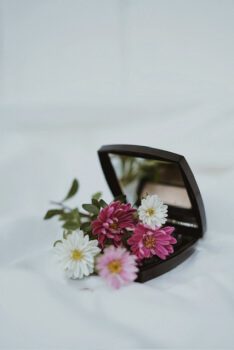
In 1983, he developed the fragrance wheel, a visual representation for categorising and classifying different fragrances based on their dominant scent characteristics, that would make it easier to find a scent in a specific category.
Michael Edwards is well-known for his extensive knowledge of fragrance and expertise in the perfume industry. His creation of the fragrance wheel has become a widely used tool in the world of perfumery, helping both professionals and consumers understand and appreciate the diverse range of scents available in the market.
Affiliate DisclosureThis post contains affiliate links, which means I may earn a small commission if you click on a link and make a purchase at no additional cost. I only recommend products or services I believe in; all opinions are mine. Thank you for supporting this website..Understanding the Fragrance Wheel: Exploring Perfume Families and Their Unique Scents
The wheel is divided into four primary fragrance families or categories, further subdivided into subcategories. Each section represents a different type of scent, and the relationships between the sections indicate how similar or dissimilar the fragrances are.
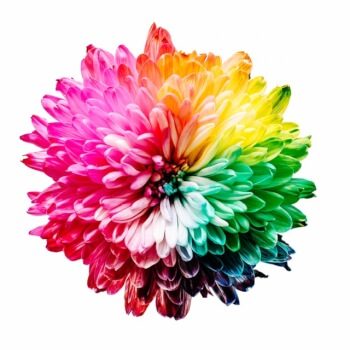
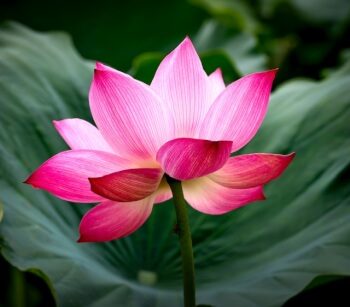

Perfume creation is a meticulous and artistic process that involves blending various aromatic ingredients to craft a harmonious and appealing scent.
Floral: This is the largest category and includes fragrances that primarily feature the scents of flowers. It is further divided into subcategories like Floral White (white flowers such as jasmine, tuberose, and lily of the valley), Floral Green (green and natural-smelling floral notes), and Floral Woody Musk (floral notes combined with woody and musky elements).
Oriental: This category is characterised by warm, exotic, and sensual scents. It is divided into Oriental Soft (light and powdery), Oriental Floral (floral with an oriental base), and Oriental Woody (woody with an oriental base).
Woody: Fragrances in this family feature predominantly woody scents. It includes subcategories like Woody Earthy (earthy and mossy), Woody Fresh (woody with a fresh and citrus touch), and Woody Oriental (woody with oriental base notes).
Fresh: This category consists of crisp, clean, and refreshing scents. It includes subcategories like Aromatic Fougère (herbal and fern-like scents), Citrus (citrus-based scents), and Water (aquatic and marine scents).
These four main categories can be further divided into more specific subcategories, comprehensively representing different fragrance types. The fragrance wheel helps consumers and perfume professionals understand a fragrance’s aromatic composition and find scents that suit their preferences.
Fragrance creators and marketers also use the fragrance wheel to identify market gaps and trends, allowing them to develop new and innovative perfumes that cater to different consumer preferences.
The fragrance wheel also aids in creating harmonious blends by identifying complementary scents from different categories.
However, it’s essential to note that the fragrance wheel is just a guide, and some fragrances may not fit neatly into a specific category. Perfumes often feature a combination of scents from various families, making them unique and distinctive.
Nonetheless, the fragrance wheel remains valuable in the perfume industry, facilitating communication and understanding among enthusiasts and professionals.
As a distributor for a perfume company called FM World UK, I have used the fragrance wheel on many occasions to help potential customers choose the right scent, especially if they want to try something new.
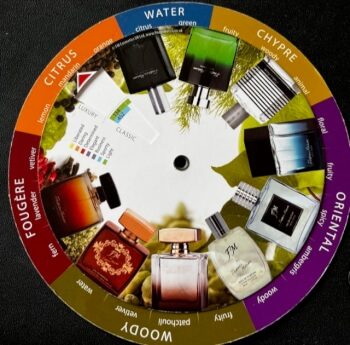
Photo ©️fragranceswithlove.com 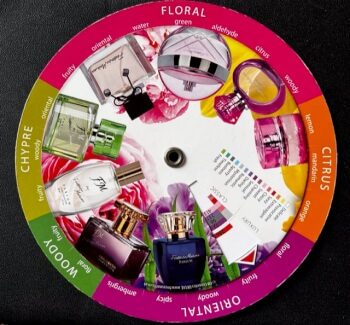
Photo ©️fragranceswithlove.com Sometimes, we don’t automatically recognise which family a particular scent falls into, so with the FM World wheel, we have a male and female side. There is an inner wheel with an arrow that can be moved to a designated fragrance family, and then, within that selection, we can see which perfume numbers fall within that fragrance family.
It is also worth remembering that trying a perfume sample before purchasing is best to ensure it suits your skin type and occasion.
The Evolution and Art of Fragrance: From Ancient Rituals to Modern Perfumery
Fragrances, perfumes or scents have been essential to human culture for thousands of years. These aromatic compositions are created to evoke pleasant sensations and stimulate our olfactory senses.
Fragrances significantly enhance our identity, express emotions, and create lasting impressions on others. Many of us have been wearing fragrances from an early age, and some, like myself, may have experimented with garden flowers when we were younger.
Related article: The Psychology of Perfume
The history of fragrances dates back to ancient civilisations like Egypt, Mesopotamia and India, where aromatic oils and natural ingredients were used for religious rituals, therapeutic purposes and beautification.
As trade and cultural exchanges flourished, the art of perfumery spread to Greece and Rome, becoming an essential part of their societies.
Creating a fragrance, known as perfumery, involves blending various aromatic compounds to achieve an appealing and balanced scent.
Perfumers combine essential oils, aromatic extracts, synthetic molecules, and other ingredients to craft unique fragrances with different notes and accords.
Related Article: Ingredients In Perfume
These notes are categorised into three main types: top notes, middle notes (also known as heart notes) and base notes. The relationship of these notes over time creates the fragrance’s overall character and longevity.
Top notes are the initial, brief and temporary scents you smell immediately after applying a fragrance. They are light and refreshing, often derived from citrus fruits or other bright and zesty elements.
Middle notes emerge after the top notes disappear and form the fragrance’s heart. They create the theme and personality of the scent, which can be floral, spicy, woody, or other distinctive accords.
Base notes are the foundation of the fragrance and provide depth and longevity. They typically contain rich, robust ingredients like wood, musk, or vanilla. These notes will be the scent that lasts the longest in your perfume or aftershave and sits on the skin for the longest time.
Fragrances can be classified into several categories, such as floral, oriental, woody, citrus, and gourmand. Each category has unique characteristics that suit different occasions, seasons, and personal preferences.
Over time, fragrances have evolved, and perfumers continue to explore new ingredients and innovative techniques to create captivating scents.
The fragrance industry has also expanded to include various product forms, such as Eau de parfum, eau de toilette, cologne, body sprays and scented lotions, catering to every individual’s needs.
Beyond personal use, fragrances have found their way into other industries, such as aromatherapy, where certain scents are believed to have therapeutic effects on mood and emotions.
Additionally, fragrances are used in household products, like candles and air fresheners, to create pleasant living spaces.
Related article: Aromatherapy oils
Conclusion
Crafted by Michael Edwards’s expert hands, this ingenious tool has etched its mark on the perfume industry. It simplifies the complexities of aromas and creates a shared language for enthusiasts, professionals, and consumers alike.
Sign up for our monthly newsletter for the latest news in the perfume world, tips on what to do with your used candle jars and more.
Love Writing Blogs? Turn Your Passion into Profit!
If you enjoy sharing your thoughts through blogging, why not make it a business? By joining Wealthy Affiliate, you’ll get access to tools, training, and a supportive community to help you build and grow your website. Whether you’re a beginner or a seasoned writer, Wealthy Affiliate makes it easy to turn your words into income.
Click the box to start your blogging journey today!
-
King Charles III’s Favourite Cologne
We were curious to discover King Charles III’s favourite cologne when over 18 million people tuned in to ITV to watch the Coronation on Saturday, May 6, 2023. We watched the ceremony of our new King’s inauguration at Westminster Abbey, the same place where our Queen, Elizabeth II, was laid to rest.
Related article: What perfume did Queen Elizabeth wear
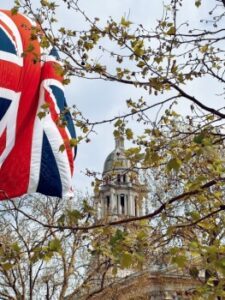
The King’s Coronation You don’t need to be a fan of the Royals or a prominent royalist to appreciate the work and effort in organising such a big event. It was a traditional affair, with the Coronation taking place in a stunning location and a few changes from our late Queen’s original crowning in 1953. In this current and shorter service, multiple faiths and cultures were represented across the U.K. It was undoubtedly a ceremony worth watching, even if you dipped in and out and watched the highlights like me. Several clients showed it on the TV in their homes so that I could watch several parts of the day.
The Princess of Wales looked as stunning as ever in an embroidered Ivory silk crêpe gown designed by Alexander McQueen and a deep blue silk satin floor-length Coronation robe.
Topped with a headpiece that any young girl would be honoured to wear, she omitted elegance. We also have to mention Prince Louis of Wales. This cheeky chap’s pure joy on every occasion lifts a smile to everyone’s face, from shielding his ears as the Red Arrows roared over the palace on the late Queen’s birthday, to charming everyone with his delightful expressions at the King’s Coronation.

The Red Arrows The five-year-old certainly knows how to entertain the crowds; we think he is adorable. The layers of the golden robe ( called the Supertunica) the King wore were impressive and quite a weight to carry. It weighs around 2kg (4.4lb). It was a stunning material; we could even see from the King’s face how heavy it was without the 17th-century St Edward’s crown.
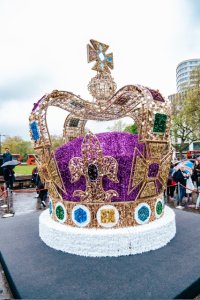
A beautiful statue of the King’s crown The crown weighs almost 5lb and is made of solid gold. Its collection of sapphires, rubies, tourmaline, and garnets surrounds a velvet cap and ermine band. It is a stunning masterpiece that will always stand out to future generations. Late in the ceremony, King Charles III was seen to be wearing a lighter version, the Imperial State Crown.
Christine Dior
Few people have heard of Christian Dior, the French fashion couturier born on January 21, 1905, and who founded the company Dior on December 16, 1946.
They are one of the most iconic perfume and clothing fashion houses today. They create their unique clothing style and produce some of the most famous fragrances in the world. Many celebrities are known to wear their scents and endorse them.
Famous women such as Jennifer Aniston and Sienna Miller have also been known for wearing the renowned fashion house’s wardrobe.
After Dior died in 1957 from a massive heart attack, another famous name in the fashion world, Yves Saint Laurent, was left to take over and keep the brand alive. He was only 21 then, but was happy to carry on Dior’s legacy until he was called to serve in the French army in 1960, when he was released.
Marc Bohan replaced YSL, alongside other famous designers who introduced handbags and shoes to the world-famous fashion house.
Christian Dior prided himself on being a couturier and having a desire for the perfume industry, so he created his first perfume, Miss Dior, in 1947.
In 2017, Dior reincarnated the original Miss Dior Eau de Parfum for women, a scent that is still hugely popular today. The American actress Natalie Portman has been the face of Miss Dior since 2010. The original Miss Dior perfume was a tribute to the designer’s sister, Catherine Dior.
King Charles III’s Favourite Cologne
We have covered several celebrities on the website and their favourite scent, so once our King was crowned, I was curious to find out what scent our new heir to the throne likes to use. Many famous faces have a signature scent, and Charles is no exception.
Knowing how big the fragrance house has become, it’s little surprise that our King would choose one of Dior’s iconic fragrances as his signature scent.
Eau Sauvage by Dior is a gorgeous, citrus-scented, and aromatic fragrance for men. It was released in 1966 and was the first fragrance for men from the House of Dior.
Affiliate disclosure
When you click on links to various merchants on this site and make a purchase, this can result in this site earning a commission. Affiliate programs and affiliations include, but are not limited to, the eBay Partner Network.
Dior EAU SAUVAGE Eau de Toilette, 50ml
Top notes: lemon, bergamot, basil, caraway, rosemary, fruit notes
Middle notes: jasmine, carnation, coriander, patchouli, orris root, sandalwood, rose, hedione, lavender
Base notes: oakmoss, vetiver, musk, amber
This bottle’s fresh scent is clean and lemony, which balances out the woody and earthy notes that many men love. The bottle’s royal style is evident from its gold-grooved design and silver belt and cap. Its superb selection of fragrance notes gives it a legendary feel and a crisp freshness that complements its floral notes.
Many users have commented that it is a suitable unisex cologne, with a crisp, solid and soft woody scent as the base notes pop through.
This scent is suitable for the older man, ideal for everyday use, and perfect for our King in his royal duties. It is not to be confused with Dior Sauvage, a bottle with a similar name that has more spicy and more robust fragrance notes.
Related article: Johnny Depp fragrance.
Conclusion:
The captivating story behind this cologne is a testament to the enduring allure of fine fragrances and their ability to evoke emotions and memories.
As we immerse ourselves in the aromatic world of King Charles III’s favourite cologne, we are reminded of the powerful connection between scent and personal identity, transcending time and leaving an indelible mark on history. If you want to smell like a King and love citrus and fruity notes with a touch of masculine base notes, try Eau de Sauvage for yourself.
Sign up for our monthly newsletter to receive the latest news in the perfume world, the best outdoor candles for the garden this summer, and information on purchasing your favourite perfume samples.
Love Writing Blogs? Turn Your Passion into Profit!
If you enjoy sharing your thoughts through blogging, why not make it a business? By joining Wealthy Affiliate, you’ll get access to tools, training, and a supportive community to help you build and grow your website. Whether you’re a beginner or a seasoned writer, Wealthy Affiliate makes it easy to turn your words into income.
Click the box to start your blogging journey today!
-
What Perfume Did Queen Elizabeth Wear?
Our late Queen certainly had good taste in colours, as evidenced by her outfits, handbags, and jewellery. But what perfume did Queen Elizabeth wear?
When it comes to perfume, everyone has their own unique scent and favourite aroma. Many have a signature scent that reminds everyone around them of their presence.
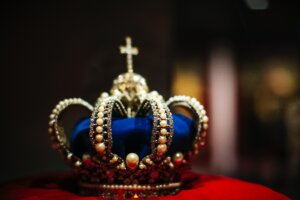
Our late Sovereign never needed a particular scent to stand out or be noticed; her presence in this world was by far the greatest.
However, the Queen wanted to wear a scent for all of her duties and events, so let’s take a look at what perfume our beloved Queen wore.
According to Vogue Magazine, one of Queen Elizabeth’s favourite scents was Guerlain L’Heare Bleue, which was first created in 1912.
Surprisingly, it’s not as expensive as we may think either.
Some may say that $126.00/£108.00 from their website is a pretty reasonable price, especially for someone as high-profile as Her Majesty.
Other places like eBay will have various prices, so it’s worth checking them out.
Affiliate Disclosure
When you click on links to various merchants on this site and make a purchase, this can result in this site earning a commission. Affiliate programs and affiliations include, but are not limited to, the eBay Partner Network.
Take a look on eBay for Guerlain L’Heare perfume.
We almost see a touch of royalty in the shape of this perfume bottle that Raymond Guerlain designed. The soft top edges nearly look like a scroll, used by the ancient Greeks and with a hollowed heart as its stopper, it gives a sense of royalty and romance.
Another’ royal’ look is also evident with the blue circled label in the centre of the bottle. When we learn of the fragrance notes behind this scent, some might say that our Queen should be wearing it, too.
Top notes: Aniseed, bergamot
Heart notes: Tuberose, carnation, violet, rose and Neroli.
Base notes: Tonka bean, iris, benzoin and vanilla.
Take a look at the heart notes, in particular, in this scent. What a wonderful combination of flowers—those that speak volumes when it comes to royalty.
Quite fitting also that L’Heure Bleue marks the meeting of two soulmates destined to become one in the frisson of eternity “-Guerlain.com.
Iris is one of the most expensive and admired fragrance ingredients, so it’s easy to learn why this perfume is fit for a Queen and is the key ingredient in this bottle.
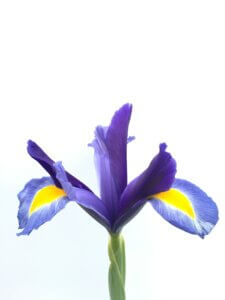
Iris scent makes its mark in the Queens favourite perfumes The top notes give a distinctive smell of aniseed with a fresh scent of bergamot – a beautiful combination of floral, citrus and tangy notes. The base notes are rich and warm in toasted almonds, vanilla, nutty, cinnamon and spicy scents.
Three stages of perfume notes
We know that perfume goes through three stages when worn on the skin, and we instantly smell the top notes of any perfume.
These notes will hit us instantly as soon as we spray our scent. They are our first impression of a fragrance and the first to leave your skin.
The top notes are often fresh, citrus, and refreshing. Once they calm down, usually around 5 minutes after being on the skin, we then smell a selection of heart notes.
The heart notes of a scent are the main centrepiece of a perfume, and the notes we smell tend to linger between 6 and 8 hours after the perfume has been sprayed.
As these notes last longer than the top notes, they usually have a lingering floral and woody scent.
Once those heart notes have settled down, we appreciate the base notes, which remain for the rest of the perfume’s duration.
Alongside the heart notes, the base notes are also the scents that those around us will continuously smell.
Base notes are the foundation of perfume and almost the lasting scent and impression.
These notes are the ones that others will remember you by, bring back fond memories and add fullness and depth to your scent.
Base notes are often woody, with a delicate fragrance of musk, and they are the longest-lasting within your chosen perfume.
If you purchase a perfume or aftershave that contains 20% perfume oil, such as FM World fragrances, the scent will last for perhaps longer than 8 hours.
This also depends on your skin type too.
Depending on the strength of the perfume you have purchased, whether it be an eau de toilette, eau de perfume, or perfume, can also determine how long the fragrance lasts.
Another favourite scent for the Queen
Another popular choice of perfume that the Queen has been known to wear and that is affordable is White Rose by Floris, created by Mr John Floris in the early 1800s.
Florence Nightingale has also worn this scent, and it is cruelty-free.
This more simplistic bottle design will set you back around $145.00/£80.00 within many perfume lovers’ budgets.
This bottle also shows that the Queen has a favourite when it comes to particular fragrance notes.
Fragrances notes in White Rose by Floris
Top notes: Aldehydic green and carnation
Heart notes: Iris, rose, jasmine and violet
Base notes: Amber, musk, and powdery notes
- As one might expect with a name like White Rose, this fragrance is lightweight, doesn’t overpower, and lasts around 9 hours.
It brings a sense of bouquet flowers with its soft choice of aroma. Another scent that has iris notes that are balanced out well with the amber and musk.
Our Queen had great taste in perfume—classy scents to match her classic dress sense.
Have you ever tried these perfumes that the Queen has worn? Let me know below. I’d love to hear your thoughts.
Sign up for our monthly newsletter to learn the latest news on the fragrance world, skincare and much more.
-
Chanel No. 5 Perfume History
Chanel No.5 perfume boasts an iconic and fascinating history. Whenever we mention Chanel No.5, most women—and many men—immediately recognise this famous fragrance. We naturally associate it with class and timeless appeal, maintaining its incredible popularity since its creation.
With fragrance notes belonging to the floral perfume family group, including fruity, oriental, aldehydic, citrus, and woody notes, it captured the hearts of women, not just for its iconic name.
So, where does the history of Chanel No. 5 perfume begin? Chanel No. 5 is a classic perfume created in 1920.

The iconic Coco Chanel The Birth of a Legend: Coco Chanel’s Journey to Create an Iconic Fragrance
The story begins with Coco Chanel, a remarkably clever French businesswoman. She was the darling of the Parisian social elite and set out to create a fragrance to revolutionise women’s smell.
By the early 1920s, Chanel had already become a phenomenon in the French fashion scene. She envisioned her style and projected this image to women worldwide. By 1921, she had established successful boutiques in Paris, Deauville, and Biarritz, and her success only continued to grow.
She even owned a villa in southern France and drove her blue Rolls Royce—a classic car for a classic lady and her creation. With her ongoing success, she now aspired to create a fragrance that would match the essence of the new, modern women she epitomised.
Unfortunately, Chanel’s background was quite complex and marked by challenges, and this complexity found its way into her signature fragrance.
Affiliate Disclosure
This page contains affiliate links. Should you click on a link and make a purchase, I may receive compensation.
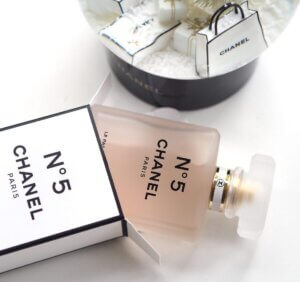
An iconic creation by Coco Chanel Chanel’s mother worked as a laundry woman on rural farms, and when her mother passed away, Chanel went to a Cistercian convent at Aubazine. Her father, on the other hand, was a market stallholder.
Growing up in this environment, she became familiar with the scent of soap and freshly cleaned skin, which stayed with her for years. Chanel was very conscious about cleanliness, and when she worked with other mistresses of the rich, she often complained about their odour. The combination of body odours and musk was not a pleasant one.
She faced challenges finding someone to commission her creation with this new fragrance, and in the 1920s, creating a fresh fragrance often involved using lemon, orange, citrus, and bergamot fragrances.
These scents were fresh-smelling, a perfect combination for a ladies’ fragrance, but they didn’t last very well when applied to the skin. Finding a scent that lasts throughout the day is a common quest. During the summer of 1920, while on holiday with her lover, Chanel heard of a perfumer who could help her create the perfect perfume. It seemed like the ideal solution.
This perfumer was a highly sophisticated man named Ernest Beaux, who lived nearby in Grasse, southern France, the world capital of perfume. Beaux listened to Chanel’s quest and eagerly accepted the challenge of crafting the perfect scent.
Related Article: Diptyque Perfume
The Creation of Chanel No.5: A Serendipitous Masterpiece
It took Beaux several months to perfect this new fragrance, and eventually, he presented Chanel with ten samples, numbered from one to five and from 20 to 24.
Chanel ultimately chose number five as her fragrance. Interestingly, there are rumours that the concoction for this scent resulted from a laboratory mistake.
Beaux’s assistant added an unprecedented quantity of aldehydes to the fragrance. Aldehydes have a soapy scent, which triggered memories of Chanel’s childhood in a convent and her later life as a mistress of luxury.
Chanel No.5: The Birth of a Timeless Scent
The scent, blending jasmine, rose, sandalwood, and vanilla notes, was an instant success—a perfect fusion of fragrances. Chanel invited Beaux and his friend to a popular restaurant, where she sprayed the perfume around the table to celebrate. Every woman passed by stopped to inquire about the fragrance and its origin.
Chanel recognised she had a hit on her hands and was on her way to creating an iconic perfume. From that moment, consumers realised they were experiencing a fragrance unlike any they had ever encountered. Chanel No. 5 evolved.
Related Article: Do you sell designer perfume?
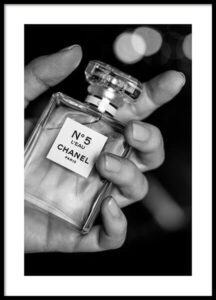
The history behind the creation of Chanel No. 5 perfume
Chanel No. 5 is a legendary and iconic perfume created by the renowned fashion house Chanel. Coco Chanel first introduced Chanel No. 5 in 1921. It has since become one of the world’s most famous and recognisable fragrances. It revolutionised the perfume industry and set new standards for luxury fragrances.
Here are some key features and facts about Chanel No. 5 perfume:
1. Composition: Chanel No. 5 is a floral-aldehyde fragrance that harmoniously blends various notes to create a complex and sophisticated scent. Its character is primarily defined by a rich floral bouquet featuring prominent May rose, jasmine, and ylang-ylang notes. The fragrance also incorporates aldehydes, which impart a unique and sparkling quality.
2. Timeless Appeal: Chanel No. 5 is renowned for its timeless appeal and enduring popularity. It has remained a symbol of elegance and sophistication for over a century and has transcended generations, captivating women of different ages and backgrounds.
3. Marilyn Monroe Connection: Chanel No. 5 gained even more fame when American actress and icon Marilyn Monroe declared that she wore nothing but Chanel No. 5 to bed. Her endorsement helped solidify the perfume’s association with glamour and sensuality.
4. The Mystery of the Name: The origin of the name” Chanel No. 5″ is often debated. Some theories suggest that Coco Chanel chose it because it was the fifth sample presented to her by the perfumer Ernest Beaux, while others believe that she liked the number five and considered it lucky.” 4. The Mystery of the Name: The origin of the name “Chanel No. 5” is often debated. Some theories suggest that Coco Chanel chose it because it was the fifth sample presented to her by the perfumer Ernest Beaux, while others believe that she liked the number five and considered it lucky.
5. The Bottle: Chanel No. 5 presents itself in an elegant, minimalist bottle designed by Coco Chanel herself. The bottle’s design reflects her preference for simplicity and understated luxury. It features clean lines, a rectangular shape, and a simple black-and-white label with the Chanel logo.
6. Enduring Popularity: Chanel No. 5 has maintained its status as one of the best-selling perfumes worldwide for many decades. Its popularity stems from its timeless scent, its association with luxury and sophistication, and the brand’s ongoing efforts to promote and reinvent the fragrance.
Over the years, Chanel has introduced variations of the original No. 5, including different concentrations (e.g., Eau de Parfum, Eau de Toilette) and limited edition releases. These variations offer different intensities and interpretations of the classic Chanel No. 5 scent while maintaining its essence.
Chanel No. 5 represents a significant milestone in the history of perfumery and continues to be cherished by fragrance enthusiasts and Chanel aficionados worldwide. It embodies Coco Chanel’s timeless elegance and artistic vision, making it an enduring symbol of luxury and femininity.
Affiliate Disclosure
When you click on links to various merchants on this site and make a purchase, this can result in this site earning a commission. Affiliate programs and affiliations include, but are not limited to, the eBay Partner Network.
CHANEL N°5 Eau De Parfum Spray 35ml
Sign up for our monthly newsletter to stay updated with the latest news in the perfume world, discover the best candles to buy, and learn how to purchase samples of your favourite scents.
